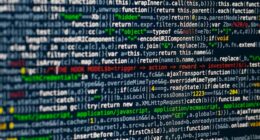Validation ensures a system meets users’ needs, while verification confirms it adheres to specified requirements. Validation checks if it’s fit for purpose, and verification checks if it’s built correctly.
TL;DR Validation Vs. verification
Validation involves evaluating a product or system to determine whether it meets the intended requirements and satisfies the needs of its users. It focuses on ensuring that the right product is being built.
Verification aims to check whether a product or system has been developed according to its specifications. It concentrates on confirming that the built product is correct and free from errors.
What is Validation?

Validation is a crucial step in the software testing process. It involves evaluating a system or component during or at the end of the development phase to determine whether it satisfies specified requirements. In simpler terms, validation answers the question: “Did we build the right thing?”
To validate software, various techniques can be used such as reviews, walkthroughs, and inspections. These methods help identify potential flaws and ensure that the final product meets user expectations.
During validation, testers focus on understanding and confirming that the software fulfills its intended purpose. This includes checking if all features work as expected, if it meets user needs, and if it aligns with business goals.
Additionally, validation ensures compliance with industry standards and regulations. For instance, in sectors like healthcare or finance where data security is paramount, validating software helps guarantee that sensitive information remains protected.
Validation strives to eliminate any discrepancies between what was initially envisioned for the software and what has actually been developed. By conducting thorough checks throughout different stages of development, organizations can have confidence in delivering high-quality products that meet customer demands effectively
What is Verification?
Verification is a crucial step in the process of ensuring accuracy and correctness. It involves evaluating a system, product, or component to determine if it meets specified requirements. In simpler terms, verification asks the question: “Did we build the thing right?”
During verification, various methods are employed to check that each individual component of a system functions as intended. This may include conducting inspections, reviews, and walkthroughs to identify any potential defects or issues.
One common approach to verification is testing. By subjecting different parts of a system to rigorous tests, such as unit testing or integration testing, developers can gain confidence that their code performs correctly under specific conditions.
Another key aspect of verification is documentation review. By carefully analyzing design documents and specifications, experts can ensure that all requirements have been met and nothing has been overlooked.
Validation focuses on whether we built the right thing for our users’ needs; while verification ensures we built it correctly according to established standards and specifications.
Validation Vs. Verification – Key differences
| Aspect | Validation | Verification |
|---|---|---|
| Focus | Ensures the product meets user requirements. | Confirms adherence to specified requirements. |
| Goal | Checks if it's fit for the intended purpose. | Checks if it's built correctly. |
| When Applied | Applied during the testing phase. | Applied during the review or inspection phase. |
| Activities | Involves functional testing and user acceptance testing. | Involves inspections, reviews, and walkthroughs. |
| Purpose | Ensures the right product is built. | Ensures the product is built right. |
| Example | Checking if a software system functions as intended by end-users. | Reviewing code to ensure it follows coding standards. |
| Outcome | Determines if the product satisfies user needs. | Determines if the product adheres to specifications. |
| Focus on Errors | Focuses on identifying deviations from user requirements. | Focuses on finding and fixing errors in the product. |
| Stage of Process | Typically conducted towards the end of the development cycle. | Can be conducted throughout the development process. |
Image Credits
Featured Image By – Markus Spiske
Image 1 By – Lukas








